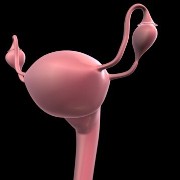 Photo: Getty Images
Photo: Getty Images
Fallopian tubes are an important part of a female’s internal reproductive organs, which also include the vagina, uterus and ovaries. Inside the fallopian tubes is where fertilization of an egg by a sperm normally occurs.
WebMD says fallopian tubes are narrow tubes that are attached to the upper part of the uterus and serve as tunnels for the egg cells to travel from the ovaries to the uterus, where they then implant to the uterine wall.
Fallopian tubes are not just simple tunnels providing passage for eggs. Within them, are different segments; each with a different function. Tubal-reversal.net lists these locations (starting from the ovarian area to the uterus) as the fimbrial segment which faces the ovary. The infundibular segment is a funnel shaped segment. Next is the ampullary segment. This is the wide middle segment. Then the isthmic segment is the narrow muscular segment near the uterus and finally, the interstitial segment which passes through the uterine muscle into the uterine cavity.
According to KidsHealth.org, fallopian tubes are four to six inches long and about as wide as a piece of spaghetti. Within each tube is a tiny passageway no wider than a sewing needle. At the end of each fallopian tube is a fringed area that looks like a funnel.
Tubal-reversal.net says these fringed areas are called fimbria. That is Latin for fringes or fingers. There are around 20 to 25 of these so-called “fingers.”
These fringed areas wrap around the ovary but do not completely attach to it, says KidsHealth.org. When an egg pops out of an ovary, it is pulled into the fallopian tube.
When the egg is inside the fallopian tube, Tubal-reversal.net says millions of tiny hair-like cilia line the fimbria and interior of the fallopian tubes. Muscular contractions cause the cilia to beat in waves hundreds of times a second catching the egg at ovulation and moving it through the tube to the uterine cavity. That’s right; these tiny hairs are responsible for pushing the egg down the fallopian tube.
Tubal-reversal.net goes on to say, the interstitial segment of the tube acts like a muscle sphincter and prevents the egg from being released into the uterus until it is ready for implantation. Once inside the fallopian tube, the egg and sperm meet and the egg is fertilized. If an egg doesn't become fertilized within 24 to 36 hours after ovulation, it deteriorates and is removed by the body's immune system.
Sources:
http://www.webmd.com/sex-relationships/guide/your-guide-female-reproductive-system
http://kidshealth.org/teen/sexual_health/changing_body/female_repro.html#
http://www.tubal-reversal.net/fallopian-tubes.htm
http://www.epigee.org/guide/reproduction.html
http://www.gynesurgery.com/anatomy.html#ft
http://www.cchs.net/health/health-info/docs/2400/2418.asp?index=9118
Reviewed July 25, 2011
by Michele Blacksberg R.N.
Edited by Shannon Koehle





Add a CommentComments
There are no comments yet. Be the first one and get the conversation started!